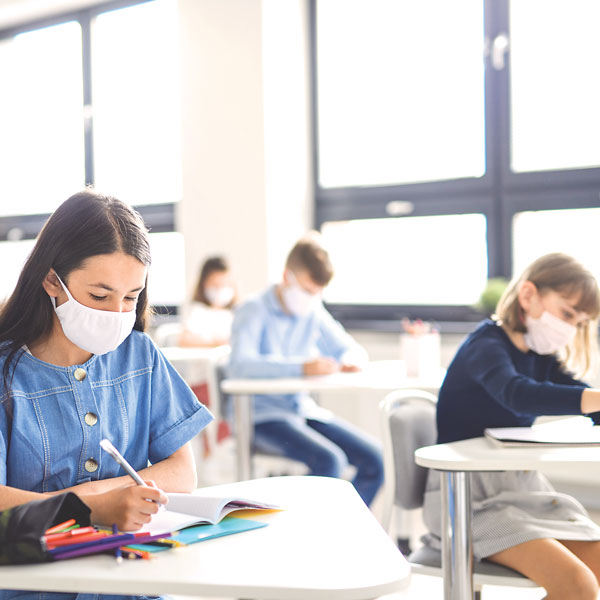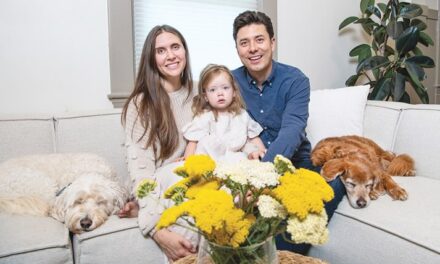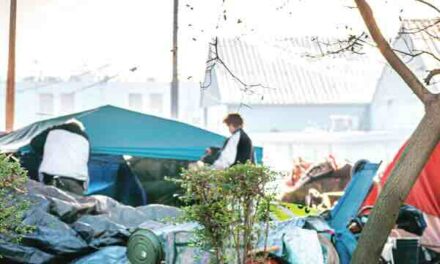Since I have no school-age children or grandchildren, I’ve watched the debate over school openings from afar. But every American has a stake in the discussion over how, when and if to bring kids back to school. Pandemic-driven closures last spring affected 62 million pre-primary, primary and secondary school students, along with parents and teachers.
Sadly, the debate is taking place at a divisive time—the 2020 presidential election, as our country experiences unprecedented civil and economic unrest and a rise in COVID-19 cases, hospitalizations and deaths.

The debate about reopening classrooms peaked when an alliance of teacher unions and progressive groups sponsored what they called the National Day of Resistance in early August. With mock coffins, they protested a return to teaching would “kill them.”
Teacher groups have been busy listing demands before they return to classrooms. These include canceling rents and mortgages, a freeze on evictions and foreclosures, and a moratorium on standardized testing. They favor abolishing charter schools and voucher programs. They insist if public schools do not open this fall, private schools must likewise remain closed. Completely unrelated to coronavirus, they demand Medicare for All and police defunding. Many unions threaten to strike if asked to return to work.
One rare blessing of the pandemic has been our country’s outpouring of support for “essential” workers. These include doctors, nurses, other health care workers, first responders, law enforcement (at least until George Floyd’s death), grocery clerks, truck drivers, postal workers, sanitation workers, utility workers and more. Millions of Americans courageously show up every day, interacting with other Americans. Why can’t teachers? It seems to me they are just as “essential.”
Clearly, we must take seriously the risk teachers and school staff could transmit the virus to each other—as we would in any other workplace. Older teachers and those with underlying health conditions should remain home and receive paid medical leave.
The good news is: The accumulating scientific evidence and real-world experience is reasonably consistent. In the midst of uncertainty and disagreement regarding COVID-19, there exists a common refrain among the scientific community. Doctors and pediatricians agree—we’ve got to open schools.
Evidence suggests the risk of kids getting sick from virus is less than the harm done by keeping children out of school. According to a report in the New England Journal of Medicine, “Children living in poverty, children of color, English language learners, children with diagnosed disabilities, and young children face especially severe losses.”
The head of the Centers for Disease Control and Prevention pushed for schools to reopen in the fall, saying it’s in the “public health interest” to do so.
“I don’t think I can emphasize it enough, as the director for the Centers for Disease Control, the leading public health agency in the world: It is in the public health interest that these K-12 students get the schools back open for face-to-face learning,” Dr. Robert Redfield told Congress. The CDC reported 45 American children under age 15 have died of COVID-19 since February.
The American Academy of Pediatrics summarized the case for reopening: “The importance of in-person learning is well-documented, and there is already evidence of the negative impacts on children because of school closures in the spring of 2020. Lengthy time away from school and associated interruption of supportive services often results in social isolation, making it difficult for schools to identify and address important learning deficits as well as child and adolescent physical or sexual abuse, substance use, depression and suicidal ideation. This, in turn, places children and adolescents at considerable risk of morbidity and, in some cases, mortality.”
Food insecurity among students is another big issue. The vast majority of schools participate in the National School Lunch Program, providing daily meals to more than 30 million children. Many families depend on schools for student health services.
Of the 25 countries that either never closed schools or already reopened classrooms, there appears to be very few, if any, reports of virus transmission by a child. We can learn a great deal from the experiences of other industrialized countries. Iceland, Netherlands, Belgium, Denmark, Norway, Austria, Germany, Finland, France and Sweden reopened schools in April and May. Their experiences have been largely positive with safety protocols in place.
The outcomes have been as positive in countries where the pandemic has been as deadly as in the U.S. and countries where it has not. Every European country that reopened in spring plans to start the new school year on time. Our state can learn a great deal from the successful variety of global school modifications by age groups.
Dr. Scott Gottlieb of the American Enterprise Institute and former commissioner of the Food and Drug Administration wrote recently, “Teachers and students can limit spread by wearing masks. Weather permitting, classes can meet outdoors, where the risk of transmission is lower. Children should be kept in pods. Intermingling among groups should be limited to prevent one instance of the virus from infecting a large group. Social distancing should be maintained as much as possible.”
It’s not just children who are affected by school closures. When closures took place this spring, millions of working parents were impacted. If their jobs could be performed at home, they were lucky. But they still had to juggle work—while helping their children learn remotely. Parents with essential jobs had to find childcare.
Single parents suffered most. Many were forced to stop working to care for their children, often with devastating financial consequences. A report by Goldman Sachs found that since May, 7 million people a week are unable to work because of caring for children. More than 24 million had to stop working to care for children.
Our own Inside staff includes three mothers with school-age children. They were lucky because we have always offered an option to work remotely. But they all reported challenges. And they all know families that have been hurt by school closures.
The political right has favored school reopening, while the left has favored a continuation of distance learning. But that seemed to shift in August as House Speaker Nancy Pelosi and Senate Minority Leader Chuck Schumer concluded, “If we don’t open up the schools, you’re going to hurt the economy significantly.”
In July, Gov. Gavin Newsom issued an order to close almost all public and private campuses indefinitely and focus on remote learning. He hinted at a complex waiver system that might allow some to physically reopen.
At this writing there have been zero COVID-19 deaths of children under 18 in California. At the same time, 13,088 children have died of other causes.
Our governor appears to have given union officials veto power over the opening of schools, discounting the wishes of some teachers themselves. Polls show teachers are split 50-50 on reopening classrooms. Several teachers I know consider themselves essential. They favor a resumption of in-person education.
It’s time to move beyond partisan politics. The social and educational costs of keeping our state’s children out of the classroom are enormous. Lost learning can translate into fewer opportunities and lower incomes later in life. Let’s hope Gov. Newsom seriously considers the evidence to support reopening.
HELP SUPPORT INSIDE
Please sign up for our Inside Sacramento weekly newsletter with even more local news than we deliver in print. And consider an Inside membership, staring at $19.95 a year. Visit insidesacramento.com/shop. And TAKE THE 100% LOCAL PLEDGE!
Cecily Hastings can be reached at publisher@insidesacramento.com. Follow us on Facebook, Twitter or Instagram: @insidesacramento.com.















